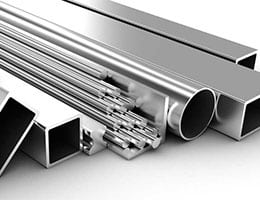 The adjective stainless is used to describe that which, due to its characteristics, does not rust . The idea of oxidation, in turn, refers to the production of oxide : the compound resulting from the combination of oxygen with a metal or metalloid.
The adjective stainless is used to describe that which, due to its characteristics, does not rust . The idea of oxidation, in turn, refers to the production of oxide : the compound resulting from the combination of oxygen with a metal or metalloid.
A stainless element, therefore, does not oxidize upon contact with oxygen . One of the most used materials with these characteristics is stainless steel , a steel alloy that has great resistance to corrosion.
It should be remembered that steel , in turn, is an alloy of carbon and iron that, depending on its treatment, obtains different properties. In the case of stainless steel, the steel is combined with chromium, nickel or molybdenum.
The resistance of stainless steel to corrosion caused by rust is given by the alloying metal it presents. These metals have an affinity for oxygen and, when reacting with it, produce the passivation of iron.
The formation of a layer on the surface of a material is called passivation. This film or patina protects it from the action of an external agent. When it comes to stainless steel, the passivation layer prevents the iron from rusting.
It is important to note that stainless steel is not a coating that is applied to steel, but is a different material formed from the alloy . Stainless steel, however, can be given different surface finishes.
The chromium used in the stainless steel manufacturing process therefore gives it properties such as its characteristic shine and corrosion resistance. It is important to remember that there are many stainless steel products that we use in our daily lives, without leaving aside those that have some piece of this material, both on the outside and inside. Cutlery, for example, is among the most common.
According to the metallurgical definition, the proportion of chromium included in the alloy is 11 percent. However, this and other values can change according to the results desired by the manufacturers in each case.
 We should note that, despite its name, this type of steel is not completely resistant to rust , regardless of its quality. However, it goes without saying that it considerably surpasses the common one in this aspect, in the propensity to stain and corrode. It is for this reason that it is so appreciated in the industrial field.
We should note that, despite its name, this type of steel is not completely resistant to rust , regardless of its quality. However, it goes without saying that it considerably surpasses the common one in this aspect, in the propensity to stain and corrode. It is for this reason that it is so appreciated in the industrial field.
Other names for stainless steel are CRES , an Anglo-Saxon acronym, and corrosion-resistant steel , especially in cases where the alloy has no grade. Those that are graded are offered in several versions, with different finishes that respond to the many needs of industrial and domestic environments, depending largely on the characteristics of the environment to which it is exposed.
The manufacturing process begins with the casting of raw materials for a minimum of twelve hours. It is then molded following the requirements of the desired shape, which later undergoes further alterations. The metal is then annealed, a treatment that involves heating and cooling it to extreme levels. If so-called encrustations appear in this step, they must be removed. At the end come the cutting operations, the finishing of the surface and, in some cases, the use of the pieces to produce more complex products.
It should be noted that platinum and gold , for example, are also stainless metals: in their pure state, they do not react with oxygen.
